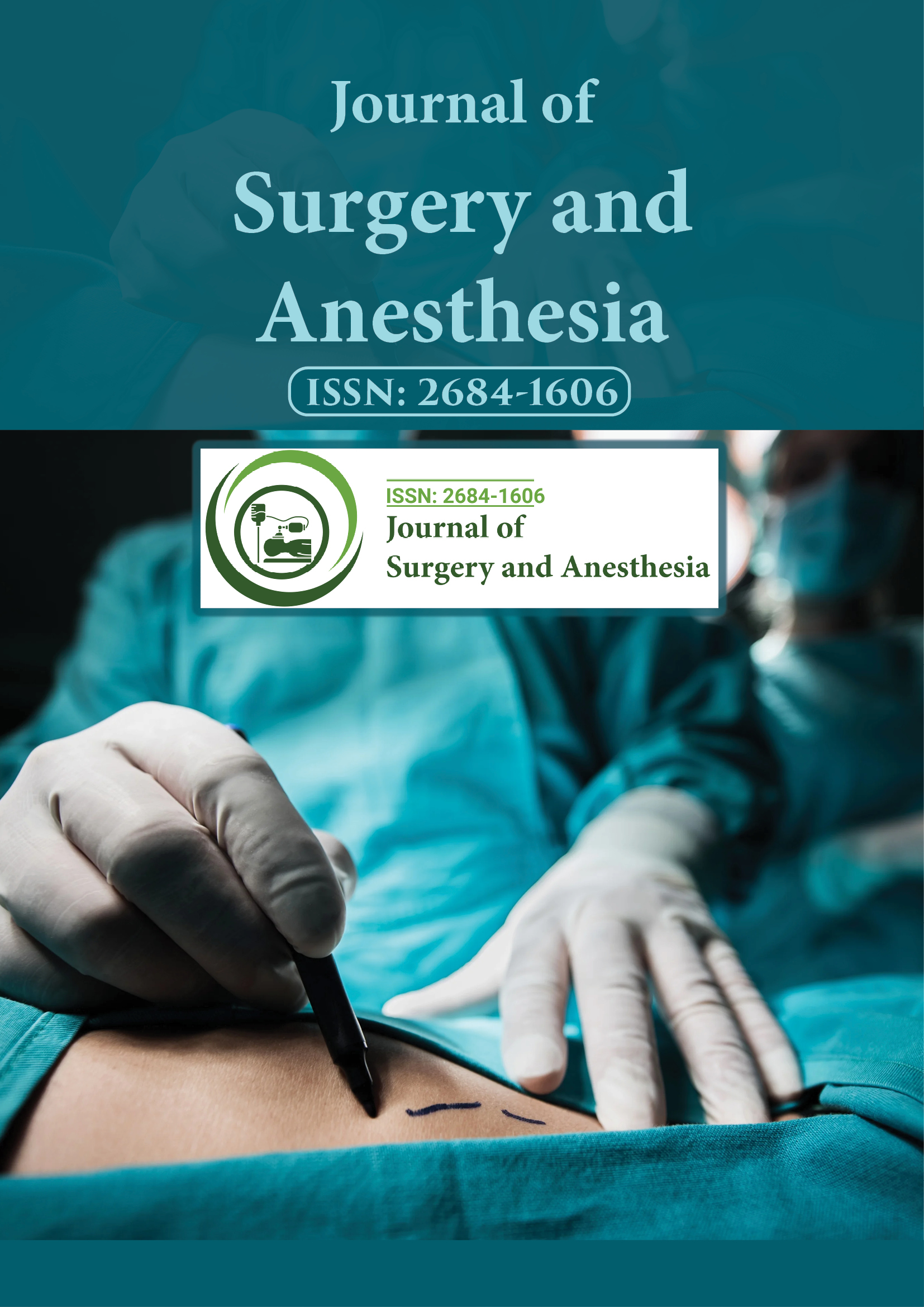Indexed In
- Google Scholar
Useful Links
Share This Page
Journal Flyer

Open Access Journals
- Agri and Aquaculture
- Biochemistry
- Bioinformatics & Systems Biology
- Business & Management
- Chemistry
- Clinical Sciences
- Engineering
- Food & Nutrition
- General Science
- Genetics & Molecular Biology
- Immunology & Microbiology
- Medical Sciences
- Neuroscience & Psychology
- Nursing & Health Care
- Pharmaceutical Sciences
Abstract
Ambulatory Percutaneous Endovascular Abdominal Aortic Aneurysm (EVAR) Repair: experience of a British tertiary vascular centre
Reda El Bayoumy*, Ankur Thapar and Vijay Gadhvi
Background: Enhanced Recovery after Surgery (ERAS) is a comprehensive, multidisciplinary perioperative care pathway that employs evidence-based practices across specialties to promote early recovery following major surgery. It aims to improve patient outcomes, enhance the patient experience, and reduce length of hospital stay through optimized perioperative care bundles. Over the past two decades, ERAS protocols have been successfully implemented across various surgical specialties including cardiac, colorectal, hepatobiliary, urological, gastric, and gynecological procedures to standardize care and ensure the delivery of evidence-based, coordinated treatment. This multidisciplinary approach has significantly reduced recovery times. While each ERAS pathway is tailored to its specific surgical specialty, several core principles are consistent across them. These include preoperative patient and family education and expectation setting, medical and nutritional optimization, pre-emptive multimodal analgesia, intraoperative goal-directed fluid management, postoperative opioid minimization, antiemetic and bowel regimens, early removal of urinary catheters and lines, early mobilization, and prompt resumption of a regular diet. Although enhanced recovery pathways have proven effective across many surgical disciplines, a coordinated, multidisciplinary care pathway specifically for vascular surgery remains undeveloped. The advanced age and multiple comorbidities typical of vascular surgery patients, combined with risks of blood loss and challenges in preoperative optimization, contribute to high rates of postoperative complications. These complications often lead to prolonged hospital stays, chronic pain, increased rehabilitative needs, and higher readmission rates. This article outlines the comprehensive multidisciplinary perioperative management of patients undergoing endovascular aortic surgery at our institution, focusing on the following key areas: Since its introduction over two decades ago, Percutaneous Endovascular Aneurysm Repair (pEVAR) has undergone substantial refinement and is now more commonly performed than open surgical repair for infrarenal abdominal aortic aneurysms. This shift in practice has led to the development of Same-Day Discharge (SDD) protocols. Eligibility for SDD has typically been based on factors such as low preoperative risk, anatomically straightforward infrarenal aneurysms, availability of a responsible caregiver for the first 24 hours post-discharge, and patient residence within close proximity to the hospital (generally within 40 miles). However, discharge decisions have often relied on early postoperative assessment. It has been demonstrated that early discharge (≤6 hours postoperatively) is achievable in over 40% of patients. To safely expand this model, especially into freestanding Ambulatory Surgery Centers (ASCs), validated preoperative risk stratification tools must be developed. These would mirror the safety protocols in place for other minimally invasive procedures already performed in such settings. Multiple large randomized controlled trials have shown that long-term survival following percutaneous EVAR is superior to that of open repair primarily due to significantly reduced perioperative mortality. Additional perioperative advantages of percutaneous EVAR include shorter operative times, reduced blood loss, lower transfusion rates, fewer ICU admissions, and decreased hospital length of stay. While one randomized clinical trial comparing endovascular and open repair reported an average hospital stay of three days for EVAR patients, a more recent analysis of National Surgical Quality Improvement Program (NSQIP) data indicates that the average length of stay following EVAR remains approximately two days. However, with continued advancements in technique and perioperative care, more recent studies have shown that carefully selected patients with uneventful intraoperative and immediate postoperative courses can be safely discharged on postoperative day one. Early complications, when they occur, typically present in the immediate postoperative period, supporting the feasibility of early discharge. A separate study involving a larger European cohort further suggested that same-day discharge may be appropriate for approximately one-third of patients. In the UK, the National Vascular Registry recorded 2,907 infrarenal EVAR procedures in 2017, with a median hospital stay of three days. Reducing the median stay to 1.5 days-by implementing a national short-stay EVAR protocol that discharges 50% of patients on postoperative day 0 or 1-could result in a potential savings of 4,361 hospital bed-days annually. At an estimated cost of £400 per bed-day, this equates to a potential annual cost saving of approximately £1.8 million, particularly if the need for postoperative level 2 or 3 care is reduced by identifying low-risk patients preoperatively.
Study Aim: We aimed to evaluate the safety and feasibility of outpatient percutaneous EVAR in a selected patient cohort, and to validate a preoperative risk profiling strategy for identifying candidates suitable for same-day discharge (≤6 hours post-procedure) or treatment in freestanding ambulatory surgery centers.
Objectives: To identify patient characteristics predictive of successful early discharge (≤6 hours) following elective endovascular repair of asymptomatic infrarenal Abdominal Aortic Aneurysms (AAA). To assess the safety and clinical feasibility of performing EVAR in ambulatory (outpatient) settings. To validate proposed risk stratification criteria for safe patient selection.
Published Date: 2025-07-28; Received Date: 2025-06-26
